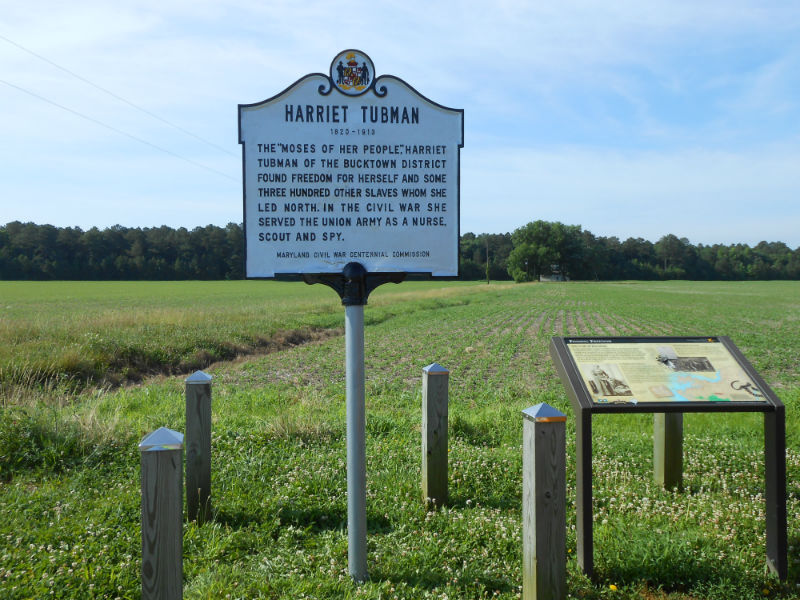Each year the American Hiking Society leads and organizing special events for National Trail Day! It’s a great day to explore Maryland’s natural and historic landmarks – often connected through trails and byways. Read on for great trails through the Old Line State:
Brief History of the National Trail System
The National Trails System Act, in 1968, established three kinds of trails within the United States: scenic trails, recreation trails, and connecting-and-side trails. The hope was “to promote the preservation of, public access to, travel within, and enjoyment and appreciation of the open air, outdoor areas and historic resources of the Nation.” This act established both the Appalachian Trail and the Pacific Crest Trail as National Scenic Trails, and recommended fourteen more as possible additions. By 1978, National Historic Trails had been added as a fourth designation.
Trails in Maryland
The Appalachian Trail
The Appalachian Trail dates back further than the National Trails System Act to 1921 when forester Benton MacKaye conceptualized a trail through the Appalachian mountains, from Maine to Georgia, with shelter camps and communities throughout. Some sections of the trail were already in existence, when the first section constructed under Benton MacKaye’s supervision was completed in 1923. Two years later the two-day Appalachian Trail Conference was held to plan the details of the rest of the trail and led to the formation of the Appalachian Trail Conservancy. The trail was completed in 1937, and the Conservancy continues to manage the trail today.
The Maryland portion of the trail goes through South Mountain State Park, Greenbriar State Park, along the C&O Canal Towpath, and ends at Pen Mar Park near the Mason Dixon Line. Relative to other portions of the Trail, the Maryland section is an easy hike. It is perfect for beginning backpackers or those looking to hike just a couple days, as the entire trail can be hiked in four to five days. It is also home to number of popular day hikes, including hikes to Annapolis Rock, Washington Monument, and Weverton Cliffs.

Harriett Tubman highway marker near Buckstown, 2014. Photo from Maryland State Highway Administration.
Harriet Tubman Underground Railroad Scenic Byway
While not an official national trail, the Harriet Tubman Underground Railroad Scenic Byway features 125 miles connecting numerous historic sites relating to the famous conductors life throughout Dorchester and Caroline Counties. In Church Creek, Maryland travellers can visit the Harriet Tubman Underground Railroad National Historical Park, home to brand new Harriet Tubman Underground Railroad Visitor Center, which features exhibits on her life and accomplishments.
Along the route travelers can see 35 historic sites sites, including where Harriet Tubman was born, enslaved, and fled from, and the region where she led the majority of her rescues. The trail is readily accessible by car, and there are a number places to hike, bike, kayak, and walk.
Potomac Heritage Trail
The Potomac Heritage Trail extends from the mouth of the Potomac River to the Alleghany Highlands in western Pennsylvania. Its main artery in Maryland is the C&O Canal Towpath, which winds from Georgetown to Cumberland, Maryland. The Trail actually makes up one section of the American Discovery Trail, which spans 15 states and Washington, DC, and is the “first coast-to-coast non-motorized trail,” connecting the coasts with a hybrid trail through cities, small towns, and forests.
Along the Potomac Heritage Trail visitors can travel the same paths George Washington covered over two-hundred years ago, learn about conservation and ecosystem restoration, and experience Maryland’s varied landscapes and history. The goal of the trail is to “connect local places with their national stories.” Abundant hiking, biking, and paddling opportunities exist throughout the trail. Easy access points to the trail within Maryland include the C&O Canal National Historic Park, Rock Creek Park, Point Lookout State Park, and Piscataway Park.
Catoctin National Recreation Trail
Originally constructed in the 1930s as a Works Progress Administration and Civilian Conservation Corps project, the Catoctin Trail became a National Recreation Trail in 2011. It winds 26.6 miles through Gambrill State Park, Cunningham Falls State Park, and Catoctin Mountain Park. The trail is perfect for hiking and sights include the longest cascading waterfall in Maryland.
